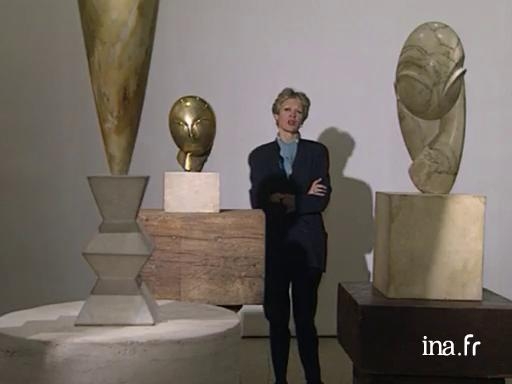Brancusi at Beaubourg

Information
Report on Constantin Brancusi's work on the occasion of an exhibit that is dedicated to him at the Pompidou Centre. The exhibit's commissioner, Margit Rowell, defines the artist's work as being "attached to the essence and not the appearance". Many shots of the exhibited sculptures including The Kiss and Bird in Space.
Context
The primitive beauty of theBaiser, the totemic sacredness ofColonnes sans fin, the slender modernity of the time ofOiseaux, the work of Constantin Brancusi brushed with universality, being both ancestral and resolutely contemporary. The sculptor of Romanian origin (1867-1957) was born in a village in the Carpathian mountains. The harsh treatment from his brothers pushed him to go on the road from adolescence, earning his keep from menial work. Brancusi would nevertheless frequent first the Craiova School of Crafts then the Bucharest School of Fine Arts and on to the Paris School of Fine Arts at the end of a long trek on foot over Europe in 1904. A story worthy of Rimbaldian bohemianism...
In Paris he was noticed by Rodin who offered for him to join his workshop. Brancusi stayed there for a while, swamped in the middle of the fifty assistants surrounding the master. "Nothing pushes great trees into the shadows" he declared. In reality, the approach of the two sculptors differed completely. When Rodin would fashion shapes that the assistants would then carry out, Brancusi revered the material. The purity and spirituality of his sculptures seemed to have no other aim than to reveal the natural force of the materials in the foreground which would be wood and stone. Just like that of his Fine Arts peers, Modigliani and Matisse, his work was influenced by Asian and African arts. His career would be linked to some famous friendships: Duchamp, Léger, Satie, Tzara, Cocteau and Man Ray.


